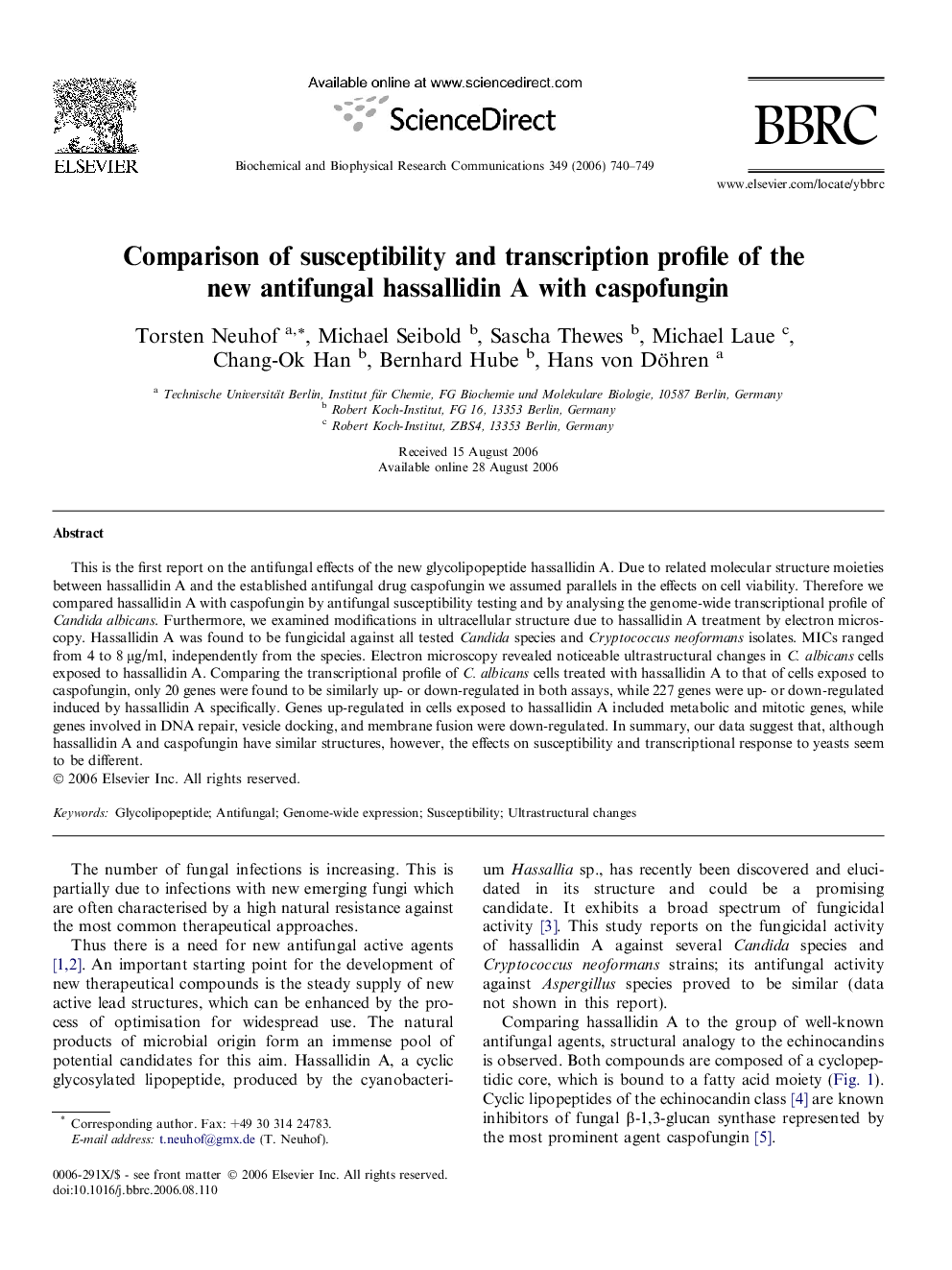| Article ID | Journal | Published Year | Pages | File Type |
|---|---|---|---|---|
| 1938711 | Biochemical and Biophysical Research Communications | 2006 | 10 Pages |
This is the first report on the antifungal effects of the new glycolipopeptide hassallidin A. Due to related molecular structure moieties between hassallidin A and the established antifungal drug caspofungin we assumed parallels in the effects on cell viability. Therefore we compared hassallidin A with caspofungin by antifungal susceptibility testing and by analysing the genome-wide transcriptional profile of Candida albicans. Furthermore, we examined modifications in ultracellular structure due to hassallidin A treatment by electron microscopy. Hassallidin A was found to be fungicidal against all tested Candida species and Cryptococcus neoformans isolates. MICs ranged from 4 to 8 μg/ml, independently from the species. Electron microscopy revealed noticeable ultrastructural changes in C. albicans cells exposed to hassallidin A. Comparing the transcriptional profile of C. albicans cells treated with hassallidin A to that of cells exposed to caspofungin, only 20 genes were found to be similarly up- or down-regulated in both assays, while 227 genes were up- or down-regulated induced by hassallidin A specifically. Genes up-regulated in cells exposed to hassallidin A included metabolic and mitotic genes, while genes involved in DNA repair, vesicle docking, and membrane fusion were down-regulated. In summary, our data suggest that, although hassallidin A and caspofungin have similar structures, however, the effects on susceptibility and transcriptional response to yeasts seem to be different.
